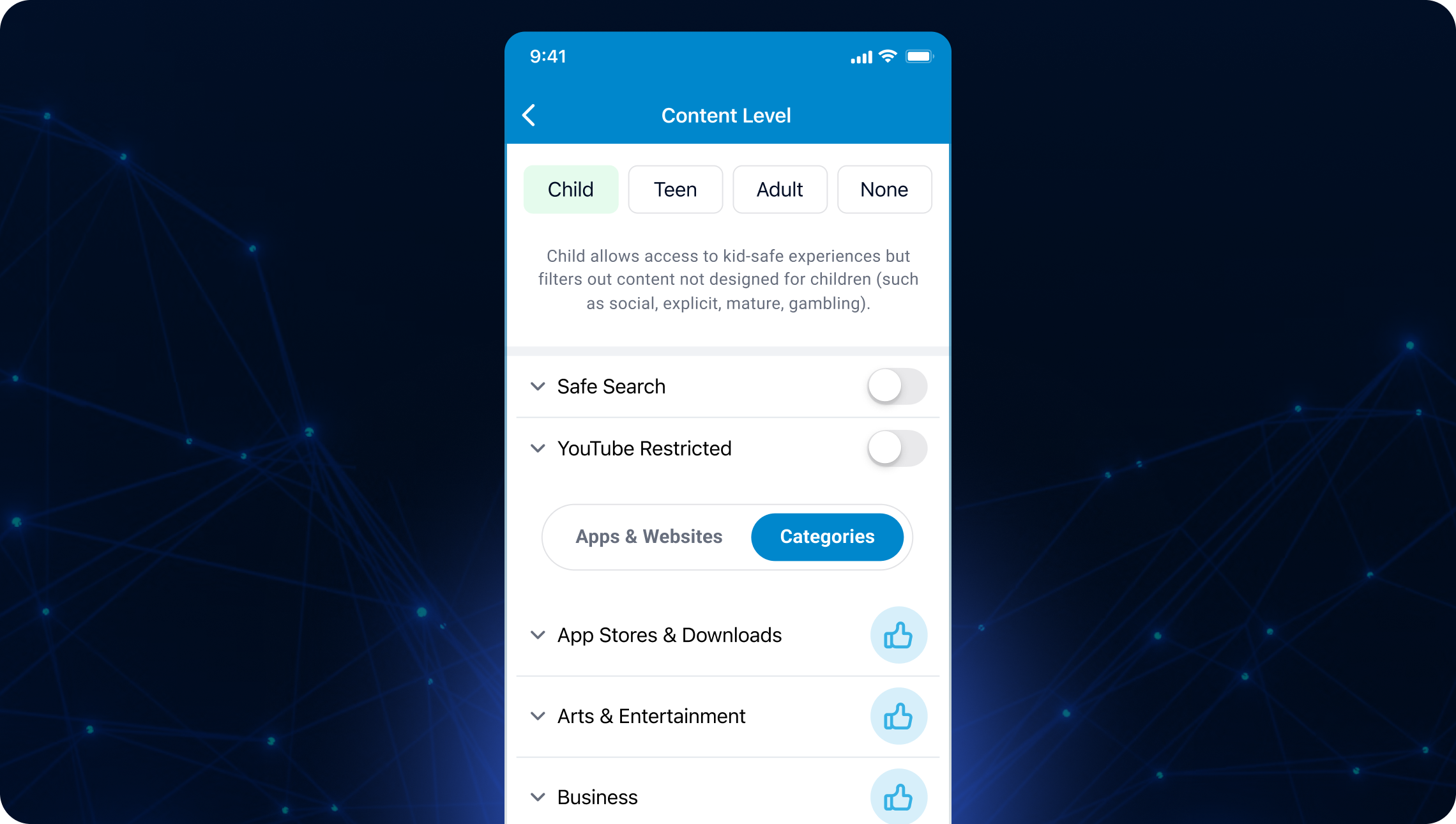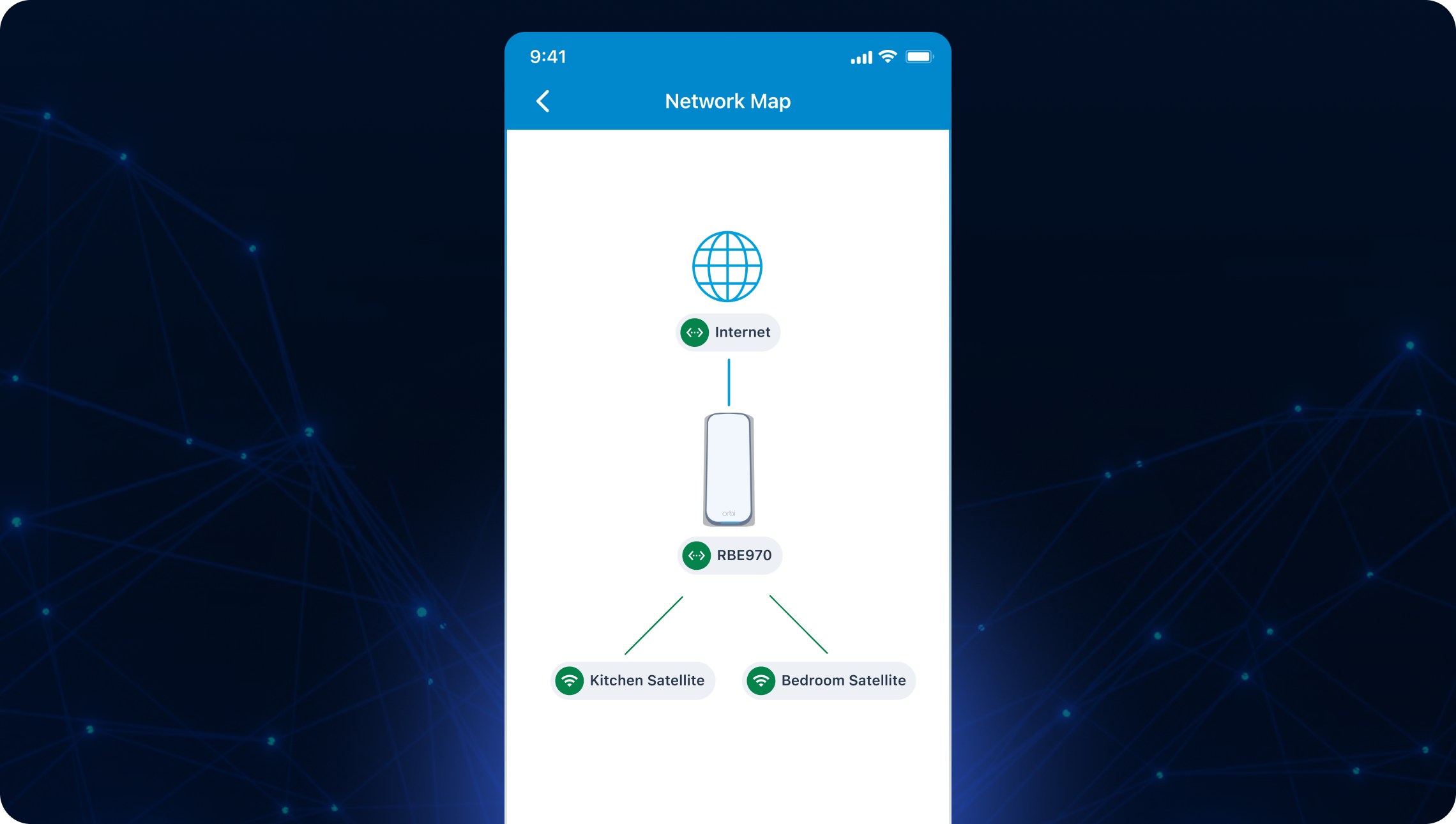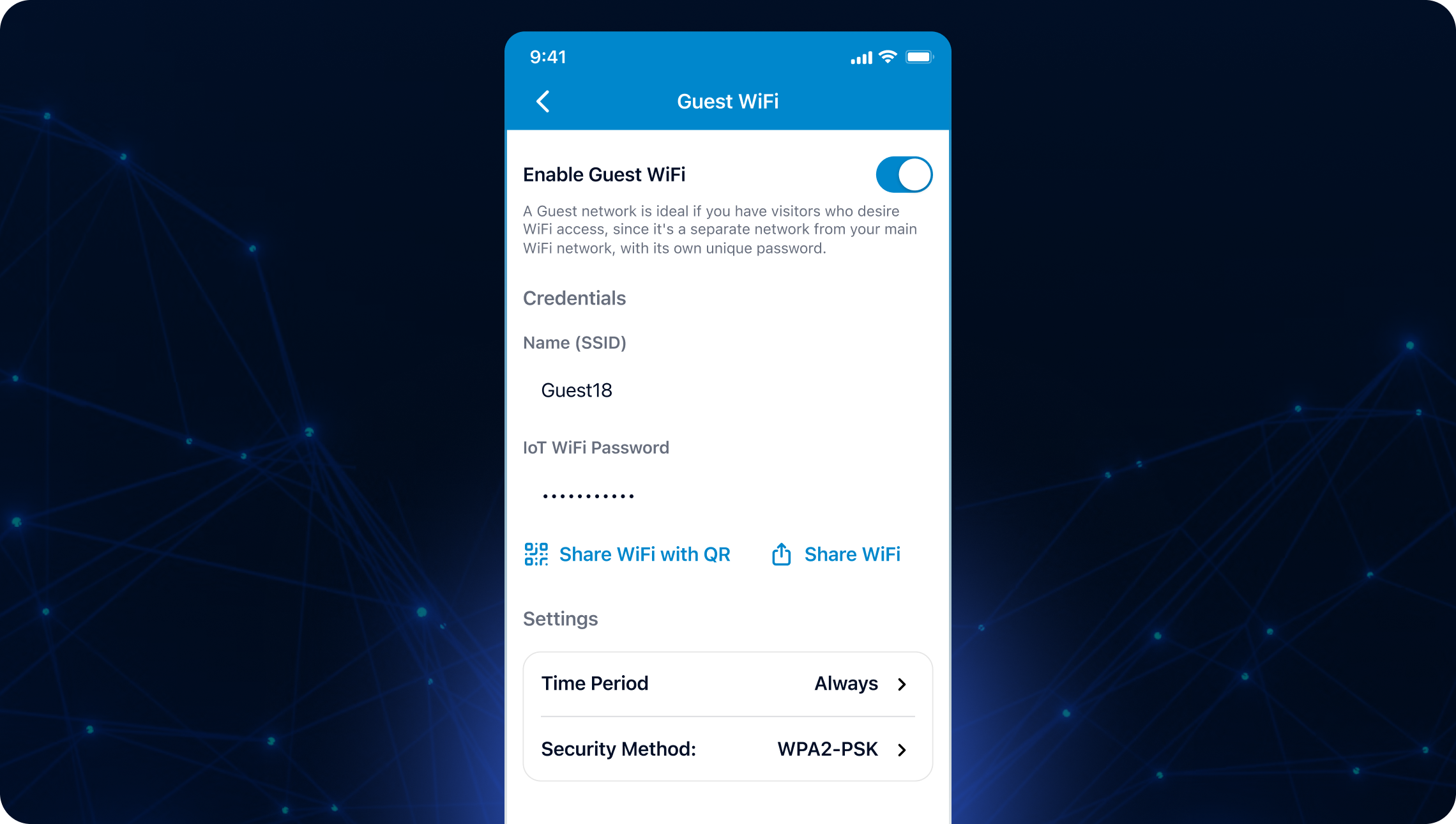Elevating User Experience and Performance for the NETGEAR Orbi Mobile App
Client
NETGEAR
Services
Location
USA
Project Duration
Ongoing Project
Technology Environment
Brief
NETGEAR, a leader in networking hardware, undertook a project focused on the development and maintenance of its mobile applications (including the one supporting the Orbi product line) for Android and iOS platforms. The primary objective was to enhance the functionality, stability, and user experience of these critical applications, which serve as the main interface for customers to manage their Orbi WiFi systems and access associated services. This ongoing project aims to ensure the mobile application effectively complements the premium Orbi hardware and supports NETGEAR’s business objectives.

The Challenge
- Application Instability: Users frequently encountered unpredictable crashes and errors, leading to significant frustration and hindering their ability to manage their home networks effectively. This instability eroded user confidence in the application and, by extension, in the Orbi system itself.
- Usability and Architectural Deficiencies: The application suffered from an outdated user interface that was difficult to navigate and an underlying architecture that was complex and rigid. This made it challenging for users to access features easily and for development teams to implement necessary updates or new functionalities without introducing further issues.
- Limited Feature Accessibility: Key features that could enhance network control and security were either missing or not easily accessible within the application, preventing users from fully leveraging the capabilities of their Orbi hardware and the associated NETGEAR services.
- Legacy Code Burden: A substantial portion of the codebase was legacy, characterized by its excessive length and lack of clear structure. This significantly complicated debugging, slowed down the implementation of enhancements, and increased the technical debt.
Proposed Solution
- Modern Architecture Implementation: The application’s core architecture was modernized by adopting contemporary patterns like MVVM (Model-View-ViewModel) and MVI (Model-View-Intent). This transition dramatically improved the organization, readability, and maintainability of the codebase, directly addressing the issues posed by legacy code.
- Proactive Bug Fixing and Stability Enhancement: A dedicated effort was launched to identify, diagnose, and resolve the root causes of application crashes and bugs. This intensive bug-fixing initiative led to a significant increase in the application’s stability and reliability for end-users.
- Comprehensive Feature Development and Integration: New and essential features for advanced network management, control, and security were developed and seamlessly integrated into the application, expanding its functionality and utility for Orbi users.
- Code Maintainability through Dependency Injection: The implementation of Dependency Injection principles further enhanced the code structure, making the application more modular, testable, and significantly easier for ongoing maintenance and future development efforts.
Key Deliverables



Key Features Enhancements
Delivery and Deployment
Continuous Integration/Continuous Delivery (CI/CD): CI/CD pipelines were implemented to automate the build, testing, and deployment processes. This facilitated faster release cycles, ensuring that updates and new features could be delivered to users more frequently and reliably.
Security Measures: Robust security protocols were a critical part of the delivery process. This included providing secure development environments and implementing strict access controls using tools like VPN (Zscaler) and PingID for accessing client resources, ensuring the security and integrity of the application and user data.
Testing and Quality Assurance: A comprehensive testing strategy was employed to ensure the high quality and stability of the application. This involved a structured QA hierarchy, conducting Regression testing to prevent the introduction of new bugs, performing End-to-End testing to validate complete user flows, and conducting detailed Sprint-wise testing of new features and bug fixes.
Value Creation and Impact of the Solution
Commercial Impact
While the provided data does not include specific quantifiable commercial metrics such as revenue increase or cost savings directly attributable to the app improvements, the enhanced stability, performance, and comprehensive feature set delivered through the project contribute to a more positive customer experience. A superior app experience is crucial for customer satisfaction, which can influence user retention and encourage the adoption of value-added services (like Armor and Parental Controls, often managed via the app), thereby indirectly supporting the commercial success of the Orbi product line.
Impact on Brand Equity
By offering a highly reliable, intuitive, and feature-rich mobile application, the project significantly strengthens the perception of the NETGEAR brand, particularly associated with the premium Orbi systems. A high-quality application reinforces NETGEAR’s reputation for delivering seamless, advanced, and dependable networking solutions, enhancing brand loyalty and overall brand equity.
Impact on Team Productivity
The successful refactoring and modernization of the application’s codebase using MVVM, MVI, and Dependency Injection have dramatically improved its maintainability and readability. This allows the development and maintenance teams to work more efficiently, reducing the time and effort required for debugging legacy issues and streamlining the implementation of new features. While specific productivity metrics were not provided, the improved codebase directly contributes to enhanced team efficiency and faster development cycles.
Platform for Future Innovation
The stable, well-architected, and maintainable foundation created for the Orbi mobile app serves as a robust and scalable platform for future innovation. The cleaner code structure and adoption of modern development practices make it significantly easier to integrate new technologies, develop and deploy advanced features, and adapt to evolving market demands, ensuring the Orbi app can continue to support future product releases and service offerings from NETGEAR. Identified future opportunities include ongoing maintenance and the development of further new features.








